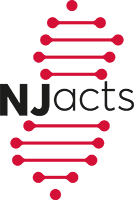Researchers have developed a novel genome assembly tool that could spur the development of new treatments for tuberculosis and other bacterial infections. The new tool, which has created an improved genome map of one tuberculosis strain, should do likewise for other strains and other types of bacteria, according to researchers whose findings appeared in Nature Communications. Mycobacterium tuberculosis, the bacteria responsible for the disease tuberculosis, infects about a quarter of the world’s population and killed 1.6 million people in 2021, according to World Health Organization. Current medical interventions are limited to a century-old vaccine that reduces infection risk by 20 percent and four to six months of strong antibiotics that sometimes prove ineffective.
“The key to beating this disease is to understand it, and the key to understanding it lies in its DNA,” said David Alland, the senior author of the study who is chief of the Division of Infectious Diseases at Rutgers New Jersey Medical School and director of the school’s Public Health Research Institute. “We hope our new pipeline provides researchers around the world with the information they need to create faster, more effective treatments and, ideally, a fully effective vaccine.” To read the full story.
